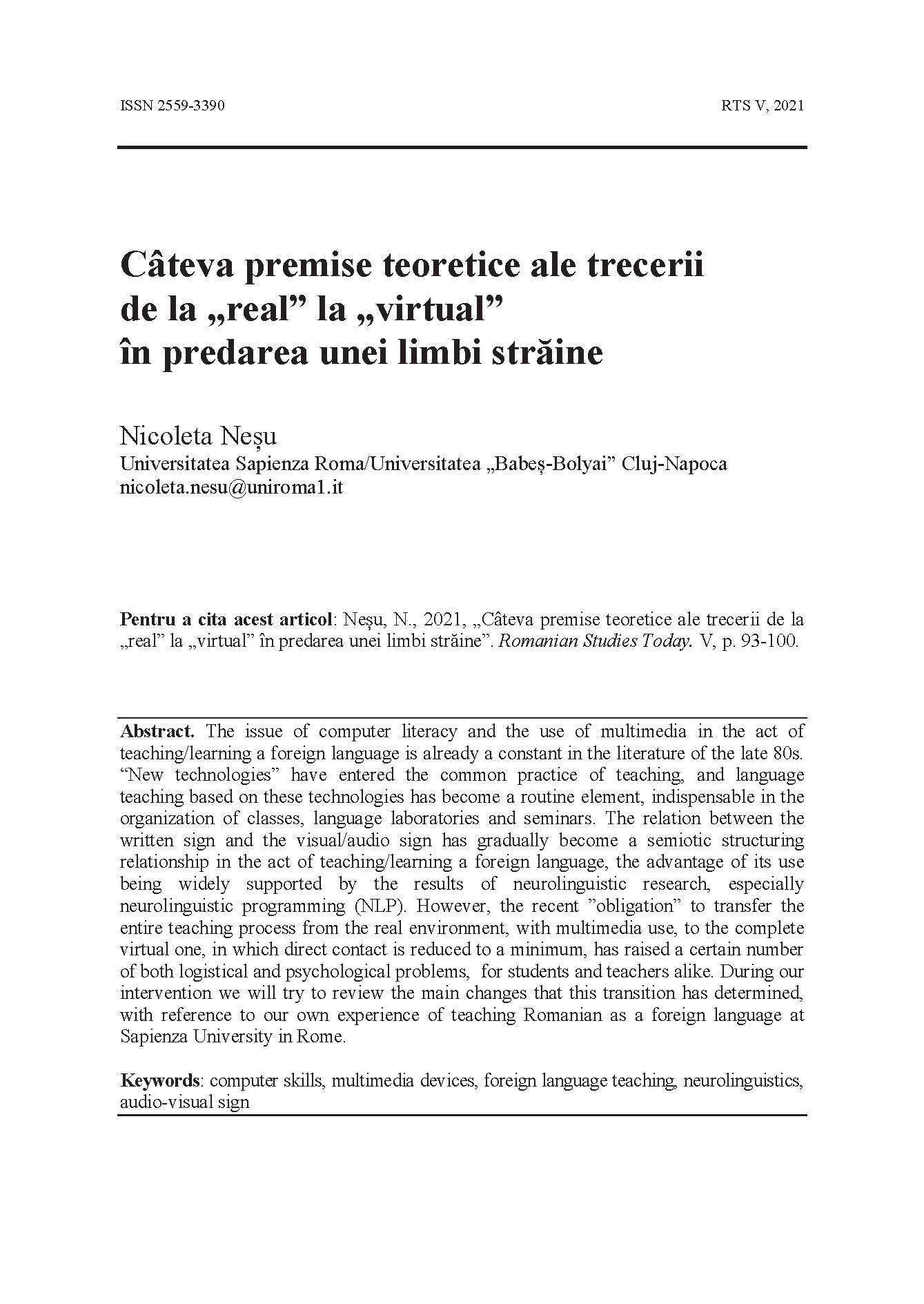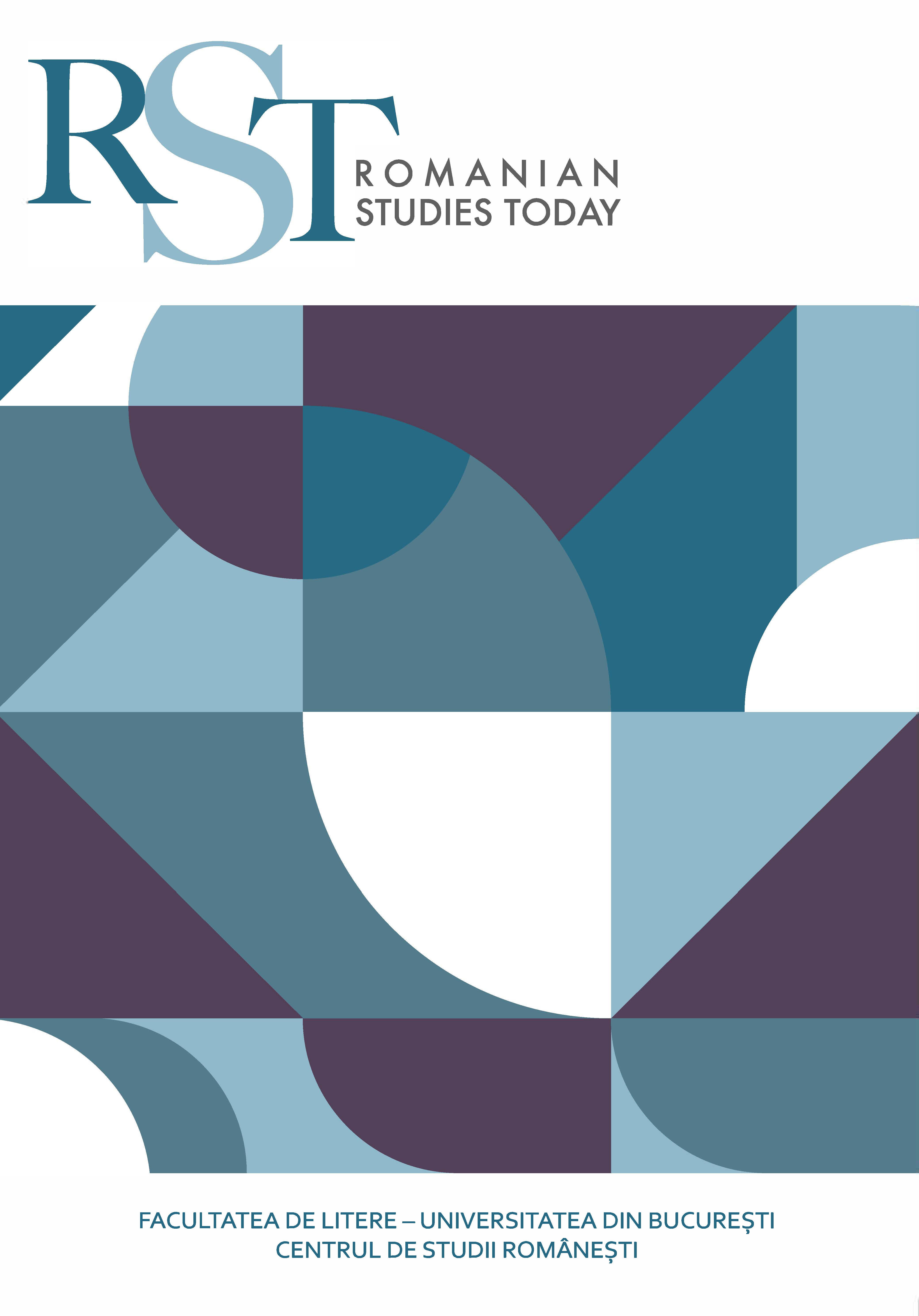Câteva premise teoretice ale trecerii de la „real” la „virtual” în predarea unei limbi străine
DOI:
https://doi.org/10.62229/rst/5.1/7Cuvinte cheie:
computer skills, multimedia devices, foreign language teaching, neurolinguistics, audio-visual signRezumat
The issue of computer literacy and the use of multimedia in the act of teaching/learning a foreign language is already a constant in the literature of the late 80s. “New technologies” have entered the common practice of teaching, and language teaching based on these technologies has become a routine element, indispensable in the organization of classes, language laboratories and seminars. The relation between the written sign and the visual/audio sign has gradually become a semiotic structuring relationship in the act of teaching/learning a foreign language, the advantage of its use being widely supported by the results of neurolinguistic research, especially neurolinguistic programming (NLP). However, the recent ”obligation” to transfer the entire teaching process from the real environment, with multimedia use, to the complete virtual one, in which direct contact is reduced to a minimum, has raised a certain number of both logistical and psychological problems, for students and teachers alike. During our intervention we will try to review the main changes that this transition has determined, with reference to our own experience of teaching Romanian as a foreign language at Sapienza University in Rome.





